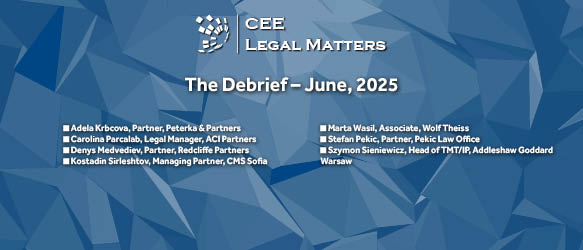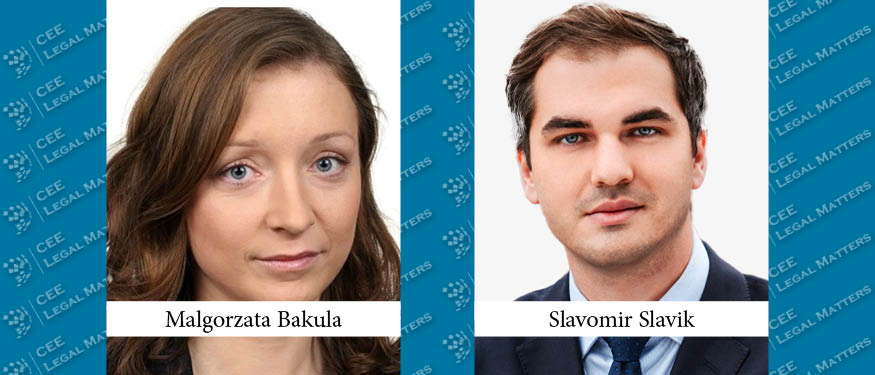By most counts, 2021 was a successful year for the Romanian M&A market. Tuca Zbarcea & Asociatii Deputy Managing Partner Stefan Damian, Nestor Nestor Diculescu Kingston Petersen Partner Gabriela Cacerea, Dentons Managing Partner Perry Zizzi, and Wolf Theiss M&A Partner Ileana Glodeanu have many reasons to believe 2022 could be a good year as well, but also quite a few to expect a slowdown in activity.
Placing Initial Bets
“2022 surely started on a very optimistic note with many predicting a buoyant year for M&A,” Damian says. This optimism was encouraged by 2021, which, according to Cacerea, “has been a very intense year in terms of M&A deals reported (be those completed, pending, or aborted), with a relevant share of major transactions across industry sectors,” furthered by Zizzi’s note that 2022 started out in vibrant fashion: “it has been quite busy, since November of last year until now, with green energy and agriculture M&A leading the pack.”
“While I cannot say that all these predictions are gone now,” Damian says, “I do believe that the current events in Ukraine, the ensuing economic sanctions against Russia, and the slowdown of the EU economy will have a ripple effect on global markets on multiple counts, including from an M&A perspective.” But what that effect will be, for the market, is unclear for now.
On one hand, Damian believes “there is an opportunity in the sense that certain investors will seek to relocate their business from Russia or Ukraine and, hopefully, Romania will be their first choice. This type of investments could be conducive to M&As – purchase of land, buildings, or even takeover of smaller companies, etc.” Zizzi adds that, “given the Ukrainian crisis and the fact that the agricultural exports of Ukraine and both Belarus and Russia are in question now, Romania is becoming interesting to a lot of investors these days.” On the other hand, Damian is wary that Romania could be perceived as a higher-risk country given that it is neighboring Ukraine.
Still, Cacerea reports that “the pace has been kept for 2022, too, both regarding new transactions and transactions started back in 2021.” Glodeanu agrees, sharing that her perception is the market continues to do better, “both in terms of the number of deals and their volume – numbers are booming, despite the appearance of a global slowdown.”
Fewer Big Pots
Speaking about the size of the deals, all agree that there haven’t been many larger deals, but rather a number of smaller ones. “Last year, there have been only very few deals exceeding the EUR 100 million threshold, and many smaller transactions. However, the total deal value was higher than in 2020,” Damian says. Cacerea agrees, explaining that this is, to her, indicative of “the entrepreneurial market reaching a certain degree of maturity,” while Glodeanu adds: “Last year, which was very good, missed megadeals. We initiated a survey in which 23 local offices and Romanian law firms participated. Looking at answers on the average deal size on the market, it turns out that some 90% of deals were under EUR 50 million, with roughly 45% of deals below EUR 10 million.”
Damian points out that the pattern of having numerous smaller deals has been present for a while. “This is already a trend for Romania – a high number of deals and a steady stream of small-value transactions. There have been some exceptions, of course – such as the EUR 1 billion CEZ–MIRA deal – but, generally speaking, the Romanian M&A market means fewer large deals and many smaller ones.” As to why that is, Damian feels that “one of the explanations is that there are few fully owned Romanian big companies and lots of small and medium-sized ones, hence the reduced value of the potential individual transactions.” Glodeanu, on the other hand, indicates that there could also be a trend due to “global market segmentation, geopolitical tensions, dramatic rotation from growth to value, and supply chain disruptions.”
A Look at the Spread
When asked what the most active sectors have been, Glodeanu says that there has been quite a lot of activity in “energy, tech, industrial/manufacturing sectors, and healthcare. These are what we feel to be the key areas and, of course, we’ll see a lot of cross-sector investments.” With cash balances at record highs, more and more ESG proficiency targets, or the European Green Deal providing ample incentives to many markets, she believes that these trends will only continue.
“Additionally, when it comes to the energy sector, for example, the technology has improved, making renewable and green energy more cost-efficient and, thus, lucrative for investors. In the industrial/manufacturing sectors, but not only, high returns and – most importantly – securing supply and distribution chains are drivers of both upstream and downstream integration deals. Last but not least, cyber security or digital transformation place a big focus on tech deals,” she explains.
“The star sectors in 2021 were real estate, technology/IT&C, energy/utilities, retail, health and medical, as well as agriculture,” Damian says. “This year, the Romanian National Recovery and Resilience Plan’s strong focus on energy efficiency, digitalization of road and rail transport, deployment of electric charging infrastructures, climate change adaptation, and circular economy may contribute to increasing the country’s energy independence, especially in the current context, and also facilitate the green transition in all sectors of the economy,” he explains.
Cacerea agrees that the renewables sector is booming while adding that e-commerce and remote operations, TMT, and healthcare and pharma have been quite active too. As for the main drivers behind sector growth, she stresses “the accelerated adoption of new technologies having a significant footprint in most products and services, the expansion of remote operations, significant growth in healthcare demand, and the need to implement the transition to clean energy.”
For Zizzi, the renewables sector’s main areas of interest have been wind power and solar energy. “2021 has brought a flood of client requests for green energy deals. There is a palpable need of international investors to place funds in green energy projects in Romania, even without incentives – and the war in Ukraine only exacerbated this and put it all in hyperdrive,” he says.
Holding Out for the River
Looking ahead at the rest of 2022, the horizon for M&A deals does not spell out a clear path. “All things considered, it is difficult for me to make any smart guesses as to the prospects of the M&A market in Romania,” Damian says. “All we can do is hope for the best, hope the war ends soon and that the ensuing recession will still leave some room for future growth.”
Zizzi and Glodeanu agree that 2022, while showing reasons for hope, could turn out to be somewhat less successful than 2021, which had already expended some deal opportunities. “Current predictions for the growth of the economy were down to but a few percentage points when I last checked, and they might end up going down to zero or hitting recession numbers,” Zizzi says. “I don’t have a lot of hope that there is going to be a broad advance on M&A, however, there is investor interest and I do hope that investors see that Romania, as a NATO country, is safe. I think there is a lot of dry powder in equity looking to be used and I hope we see some action by the end of 2022,” he concludes.
Glodeanu adds that most of the concerns stem from international macroeconomic developments. “With inflation levels on the rise, there is always the fear of adverse market impacts, as equity and debt market volatility impacts deal supply. Nevertheless, the cost of money is still low and – with investors seeking to place their funds so as to not get hit by inflation – we could be looking at negative drivers spurring deals onward.”
Cacerea, on the other hand, remains optimistic for the months to come. “The beginning of 2022 has been similarly promising as 2021. Considering the high number of deals in preparation, as well as the available liquidities and the dynamics and increased demand in certain industry sectors, I hope that 2022 will match the highs of 2021 in terms of M&A deals,” she says, while adding that a close eye should be kept on energy prices, supply chain disruptions, and capital costs to be prepared for any potential bumps in the road.
This Article was originally published in Issue 9.4 of the CEE Legal Matters Magazine. If you would like to receive a hard copy of the magazine, you can subscribe here.















